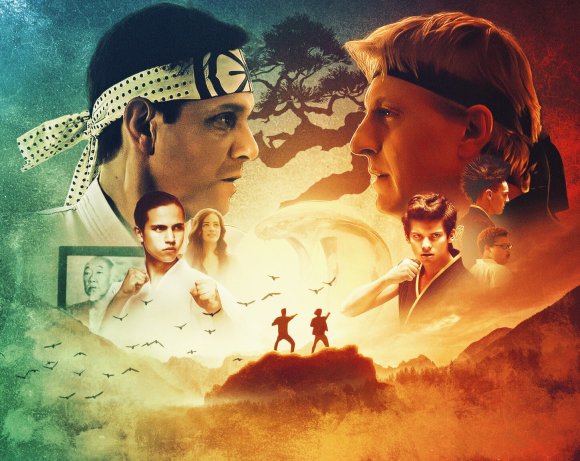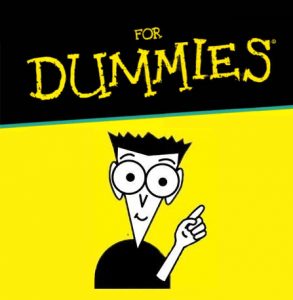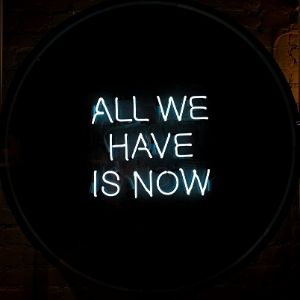My boyfriend and I are always looking for new series to watch together. He doesn’t like the cheesy drama series and I prefer to avoid series set in space or with too much science fiction. So, since most of the series have already been watched and Covid has stopped the production of a few more, it was becoming more and more difficult.
That is until we found out that we could watch three entire seasons of Cobra Kai, Karate Kid’s remake.
Now, I loved the Karate Kid movies. And it’s quite possible that those films, along with Power Rangers, had a certain influence on my decision to move to China for a year to study Kung-Fu. So I started the series with a certain level of caution. But to my surprise: I loved it.
Why? There’s a lot of bad stuff with that series – something I’ll mention later if you want to know my opinion. But we still managed to finish all three seasons in just over a week (the episodes are short, which helps).
But what glued me to the screen besides the dramatic choreographed fights and Johnny Lawrence’s sense of humour?
Answer: the three-dimensional characters.
In the original movie, Johnny Lawrence was nothing more than a mean bully who was meant to be hated. We were happy when Daniel got his girlfriend (or ex) and liked it even better when he kicked his ass.
But Cobra Kai takes to heart the lesson that most of us writers are still trying to learn. Myself included. In fact, it was thanks to this assignment that I discovered the real reason why this series moved me and my boyfriend so much, that a month later we’re still talking to each other using references from the series.
We all know that everyone is the hero of their own story. But sometimes we writers get so focused on our heroes that we forget that the other characters have to have a reason to be involved with the main character. That reason must be directly linked to the main character, yes, but the secondary character is not aware of it. To the secondary character, he is the hero of his own story.
Let’s go by parts…

Johnny Lawrence
Unlike Karate Kid, where Daniel was the protagonist, Johnny becomes the alpha-protagonist in Cobra Kai. (Alpha protagonist is when there is more than one main character (Daniel LaRusso), but there is one who is still more important than the other (Johnny Lawrence)).
With this perspective, we discover that Johnny Lawrence is not such a bad villain, but is in fact the hero of his story. In Karate Kid he was nothing more than an athletic teenager with a bad family situation and whose only comfort was his girlfriend, Ali. Until he screws up. And before he has a chance to get her back (well, because he was kind of a dick teenager), the new kid comes along full of confidence and steals the girl from him. Triggering a series of events that destroyed his life… or so Johnny thinks.
But Johnny isn’t just one thing or the other. He’s not the villain. Or the hero. He is both. And as well as being both, he starts to realise that there are times when he is neither. And that’s what makes him a three-dimensional character.
What is a three-dimensional character?
A three-dimensional character is usually described as a character who has a physical, psychological, and social dimension.
But with this definition, it becomes very easy to create clichés: The heroine who is so nice and whose fault is that she’s too nice. And because she’s so nice, on a social level everyone likes her, but not only that… She’s super physically beautiful and so all the guys are attracted to her, but she doesn’t know she’s beautiful because she’s so nice (if you find out which book I’m talking about, I’ll give you a medal 😊).
I prefer to see three-dimensional characters as characters with disparate traits. No one is one thing or the other (one-dimensional), nor are we all black on white or white on black (two-dimensional). There are times in life when we are both colours, depending on the situation, but we also have our grey areas (three-dimensional).
Johnny Lawrence is a classic asshole with an average job who drinks cheap beer, trashes bars, and eats junk food. He drives classic cars and listens to the “real” music of his time. If that were all, Johnny would be a predictable character.
But Johnny is also highly disciplined when it comes to martial arts and extremely empathetic when he takes Miguel, a kid suffering from bullying, as his disciple.
Johnny is also extremely confident and has a sense of humour, but all of this begins to wobble when he is forced to reflect on the moments where he has failed: in the tournament where Daniel won; in life in general, where Daniel is more successful; and as a father, an area where Daniel seems to do a better job than he does.
My favourite characters are always the good characters with a but… or the bad characters with a but… And it’s because of this that Johnny can be a complete jerk, but we still root for him. We’re able to feel empathy, because like I said, we’re not just one thing or just the other.
The other characters
Another thing I’ve realised that may well explain why this series is so addictive is the other secondary characters. Something I’ve been learning about the more I read the fabulous book by Lisa Cron, Story Genius.
In her book, Lisa Cron, says that although secondary characters are in the story to serve the main character, in their story, they are the protagonist and have their own reason (agenda) for being in the story.
Daniel LaRusso is not in the story to make Johnny feel inferior. Daniel is in the story because he believes there is a better way to teach martial arts. His agenda is to create a dojo that teaches martial arts with principals, but his agenda interferes with Johnny’s.
Miguel doesn’t enter the story to make Johnny feel like the hero. Miguel enters the story because he has problems at school, where he suffers from bullying. He sees Johnny’s super badass moves when he stands up for him and just wants someone to teach him to do the same. His agenda is to learn to stand up for himself, but his agenda interferes with Johnny’s when Johnny just wants to live a quiet life, but also wants to do something he loves.
Samantha doesn’t enter the story just to create more conflict (although there are a thousand one problems with this character in an attempt to create complexity at the expense of her empathy. But I’ll talk about that another time). Samantha enters the story because she has spent her life trying to avoid conflict. She hopes that will get her more points with her rich friends. She sees that this has gotten her nowhere since her friends turned on her anyway. Her agenda of trying to fit in with her group of friends at first interferes with Johnny’s when her friends wreck his car. And her agenda of becoming more true to herself – when she sees that the first goal hasn’t worked – includes resuming the activity she loved when she was six or seven. This agenda interferes with Johnny’s agenda because Samantha joins her father’s dojo, Johnny’s archenemy, but also dates his apprentice, Miguel.
Robbie is for me, one of the most clichéd characters in the series, but he too has his own agenda: to get revenge for the abandonment of his father, Johnny, when really the only thing he wants is someone to accept him. Warts and all.
But as we analyse the protagonism of each of the characters we realise that they all have their reason for being in the story. And that’s what makes the series so compelling (if we try to ignore the little details where it fails).

Patricia Morais has published 3 books, 1 novella, 1 short-story, and co-authored 1 anthology in Portuguese. She is now making her debut in the English market with a translation of her novella, Tides, and an exclusive short-story.



